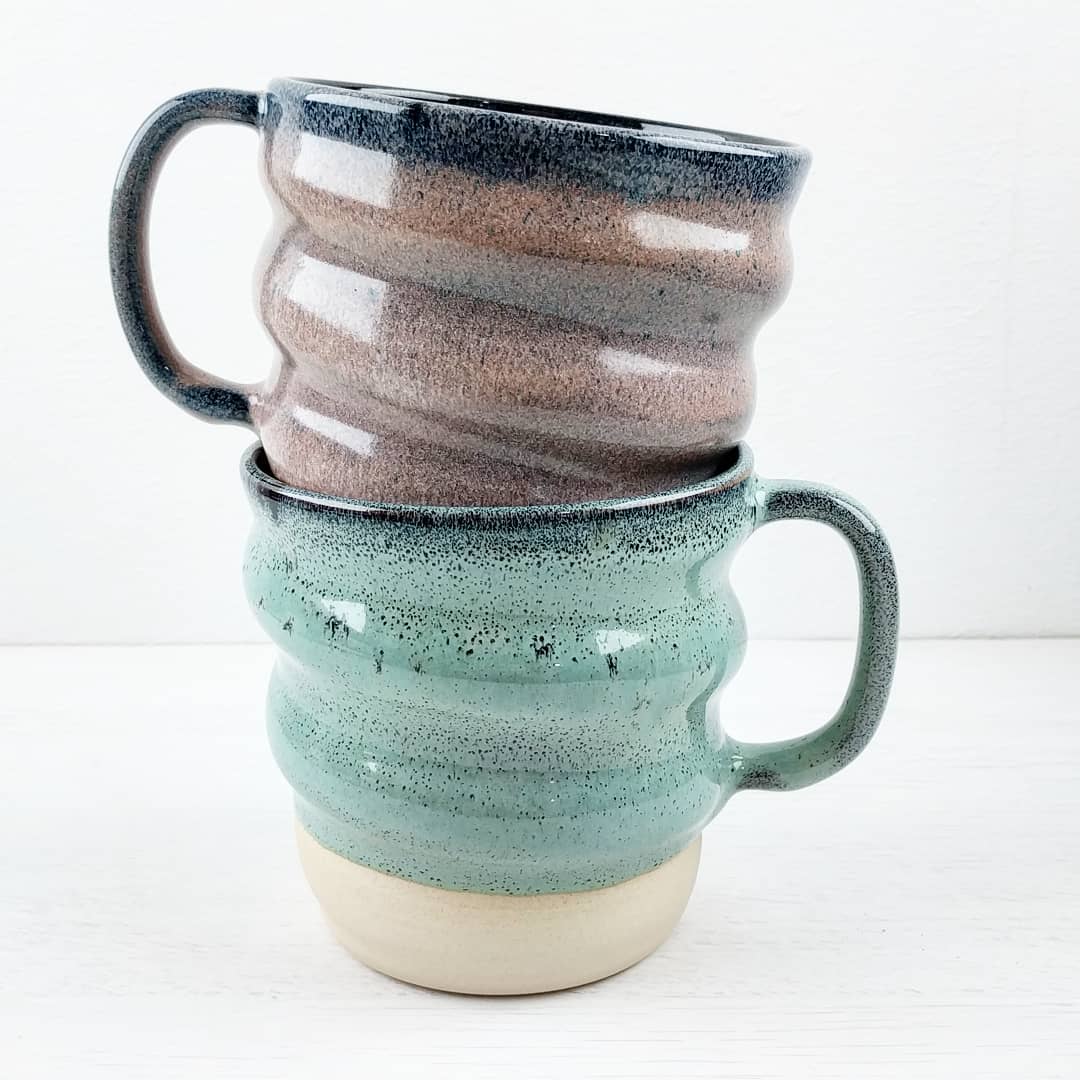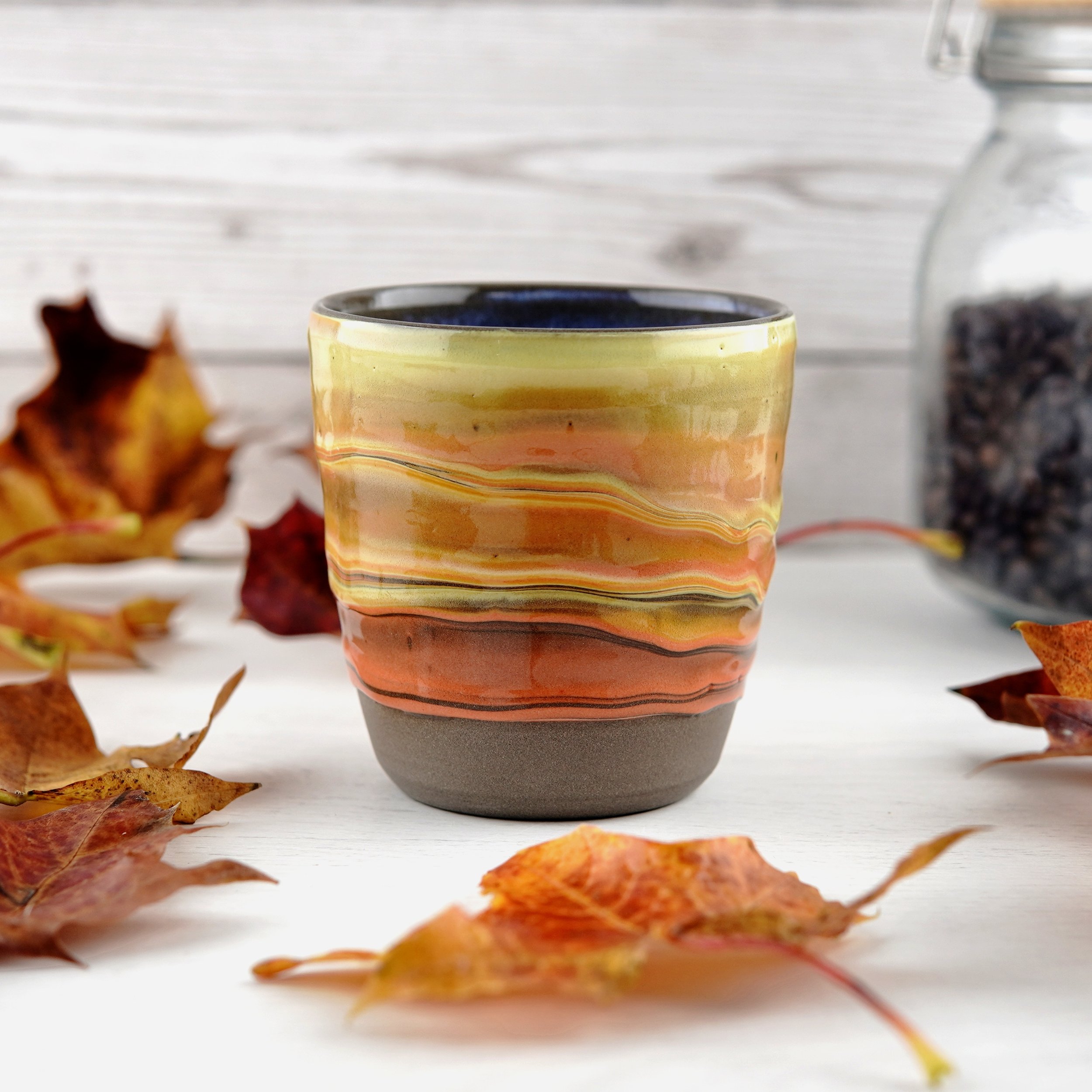Should You Sell Seconds?
Seconds are pieces that aren’t quite up to standard and, through the myriad ways it can go wrong, the ceramic process tends to produce a lot of them. Deciding what to do with seconds can be a struggle, as there are practical and emotional arguments in either direction.
What Are Seconds?
Seconds (or Factory Seconds, if you want a more specific and Googleable term) are pieces with minor issues that are sold at a discount.
The potential issues cover a very wide range, and the typical issues and standards to which they’re judged will vary between makers. Typically they would have cosmetic issues but still function correctly. Some of the more common issues would include:
Cracking - There can be small S-cracks or drying cracks in the base of the clay that won’t affect function.
Warping - A degree of warping can be normal with ceramic pieces, but excessive warping can lead to a piece being rejected.
Plucking - Where clay sticks to the kiln shelf and snaps on removal. Leads to spots of missing clay on footrings.
Blistering/Pinholing - A category of issues where bubbles appear in the surface of the fired glaze. There’s a wide range of possible causes, and the location of the blister will determine how serious an issue it is.
Crawling - Where the glaze pulls away from the clay, leaving a bare patch of clay exposed. Again, the location is what determines functionality of the piece.
Crazing - When the thermal expansion of the glaze doesn’t match that of the clay, the glaze can crack to relieve the strain. This is called crazing or crackling. It isn’t necessarily seen as a flaw, depending on the potter and other aspects of the work (such as clay vitrification).
Glaze Running - If the glaze is applied thicker than intended, it can run off the bottom of the piece. This is often salvageable (especially if you use drip catchers) but can make a mess of the foot.
General Aesthetic Issues - There can be any number of ways that a piece might not match the expectations of the maker. A glaze could be applied too thick or thin, or fired in a way that changes the appearance. A pattern could come out differently than intended. These aren’t necessarily better or worse than the expectation, but the ultimate determination of ‘correct’ lies with the creator.
Other - Infinitely many other possibilities. There are just so many ways it can go wrong!
With all of these issues, there’s a huge degree of subjectivity. Some people intentionally have some of these as part of their design, some are forgiving of some issues but not others, and some will totally reject a piece for any of these issues.
If you identify an issue with a piece, you have a few options. You can sell it for full price, you can designate it a second and sell it for a reduced price, you can gift it to friends/family/charity, or you can destroy it (and ideally use the pieces for something else). None of these is more correct than the others, it’s all down to what works for any individual.
I posted a few questions about seconds to my Instagram stories.
I got around 1000 votes in the polls, and a few hundred comment replies. Just under half the poll respondents would sell their seconds at a discount (45%). Of those that didn’t sell them at a discount, the majority gave them to friends/family and there was a smaller group (8%) who would destroy all seconds and a similar amount who would sell them at full price anyway.
Some of the following thoughts are taken from comment responses on there, most are my current personal thoughts.
Reasons For Selling Seconds
There are many reasons to sell seconds
Material Cost - If you’ve made and fired a piece before rejecting it, it has used the same amount of materials and energy as a sellable piece. Even at a heavily discounted price, you’ll recoup infinitely more of that cost from selling it as a second than destroying it.
Environmental - The materials and energy that went into the piece have come at a cost to the environment (I estimated 1-2kg CO2 for a mug, in addition to material use). The damage has been done regardless and it probably makes more sense to keep it as a functional piece. That said, I think it’s less clear cut than it might seem at first. If it’s going to someone who needs it, and would have bought another mug instead, then it’s displacing additional environmental harm. If it’s being flown across the planet to be added to a collection then this is more questionable. The higher the additional cost (in packaging, shipping, etc) the lower the environmental benefit when compared to smashing it locally.
Excludes Fewer Customers - Not everyone can afford a piece at full price. Or, even if they can, there’s still an opportunity cost to purchasing at full price (you have less disposable income for other things you might want to do). If someone self-selects as preferring the cost saving over the higher quality finish, then selling seconds allows them the option.
Higher Standards - It’s less costly to maintain high standards when you know that rejecting a piece doesn’t mean a total financial loss. This means you’re more likely to maintain standards than you might be if the decision was between selling and discarding a piece.
Reasons Not To Sell Seconds
Brand Reputation - Once a piece leaves your hands/shop/stall, you don’t know where it will go and how it will be seen (and by whom). This means that you leave yourself open to having inferior work viewed without it being necessarily made clear that it’s a second. This could be another potter seeing your work at a friend’s house, it could be that someone purchased a piece with the intention of giving it as a present without making it clear to the recipient that it was a second (this one has happened to me), or even for someone to resell on eBay claiming that it’s a first (I’m not famous or popular enough for that, but it apparently does happen).
Emotional Preservation - You’ll be sending inferior or flawed work into the world, and people might notice those flaws (especially if they don’t have the context of it being a second). It’s emotionally uncomfortable to know that you’re being judged or criticised. While individual complaints are very unlikely to do lasting damage to your brand, it is still unpleasant to be subjected to it. That, or just the fear of that happening, is a perfectly legitimate reason to avoid selling anything you’re not 100% happy with.
Customer Regret - There is always the possibility that a customer will regret a purchase. On the one hand, it might be less likely that they’ll regret a cheaper purchase. On the other, it might be more likely that they’d regret a purchase of a flawed piece if the flaw made it less pleasant to use/observe. This possibility is easier to tolerate as a maker if you’re totally happy that a piece was as good as you could make it, and less so if it isn’t up to your usual standards.
Should You Sell Seconds?
There’s no right answer to this.
I feel there are good arguments for selling seconds from a business and environmental perspective and good arguments not to from an emotional perspective.
Brand reputation is the most common reason people give for not selling seconds but I honestly don’t think that many of us are likely to be famous enough, or have an audience well connected enough, to actually suffer any reputational damage as a result of having lower quality work in the wild.
Brand reputation is the overall opinion of everyone that is aware of you as a brand, it’s informed by a number of different aspects and built up over repeated interactions. More importantly, it’s largely a web of interactions between you and individual audience members. Even if one person is upset by the quality of a piece, even if they tell everyone they know, it’s unlikely to have any lasting impact on the overall brand.
However, from your perspective in the centre of that web of interactions, you’ll be far more aware of negative opinions than anyone else on it. It might not damage the overall brand, but it can make you feel pretty awful.
Having looked at my own reluctance to sell seconds, this is the main reason why I resisted. The negative emotions of feeling judged, especially unfairly (i.e. if someone judged a second without knowing it was a second), was a greater downside than the upside of recouping material costs. This is particularly true if you’re striving for a higher quality in your work than you can reliably achieve, and you already feel a degree of imposter syndrome/phenomenon.
I feel that’s a perfectly legitimate reason not to sell seconds.
If you can sit comfortably with the thought of your seconds being unfairly judged, then the argument for selling seconds (environmental, financial, etc) is probably stronger than the argument against.
How To Sell Seconds
A lot of the Instagram replies said that they would only (or at least preferred to) sell seconds at in-person events. This way the customer could see exactly what they were buying and the seller could clarify exactly what the issue was. This is probably the best way to do it if it’s an option for you.
Some people said they spoilt their maker’s mark with a dremel prior to selling. This is a good way to visually separate the seconds even once they’re sold and in the wild.
I have a slightly different way of selling than most, where I make to order rather than listing pre-made pieces. If I get multiple orders of a certain design/size/clay I’ll throw a couple of extra pieces, and fire all of them. This means I have more than I need, either of firsts (if they all work) or seconds (if pieces get rejected). These pile up over the course of the year, especially with Limited Edition designs that are no longer available to purchase. I usually do a Lucky Dip listing in December as a way of selling these pieces (but previously only sold the firsts). The Lucky Dip is as it sounds, you buy a piece but don’t know what design it’ll be until it arrives, which allows me to sell a wide and disparate mix of pieces without having to photograph them all. This year, I’m doing the same but with seconds as well. This actually makes it easier for me as previously there has been a really tough judgement call on what pieces to include and reject, having a second tier of quality gives me a broader range of suitable quality while letting me set the bar for first quality higher.
If you have an online shop, this way will be less effort than individually listing each piece and documenting its flaws, but the downside is that the customer is taking more of a gamble.
Summary
Selling seconds is almost certainly better for the environment and financially better for you and your customers.
Not selling seconds avoids any risk to your brand or emotional state as a result of the seconds being unfairly judged.
It’s a personal choice, there’s no right answer.
If you like this sort of content and want to support the creation of more, I now have a Patreon specifically for it or a page on my website if you just want to make a single donation.












